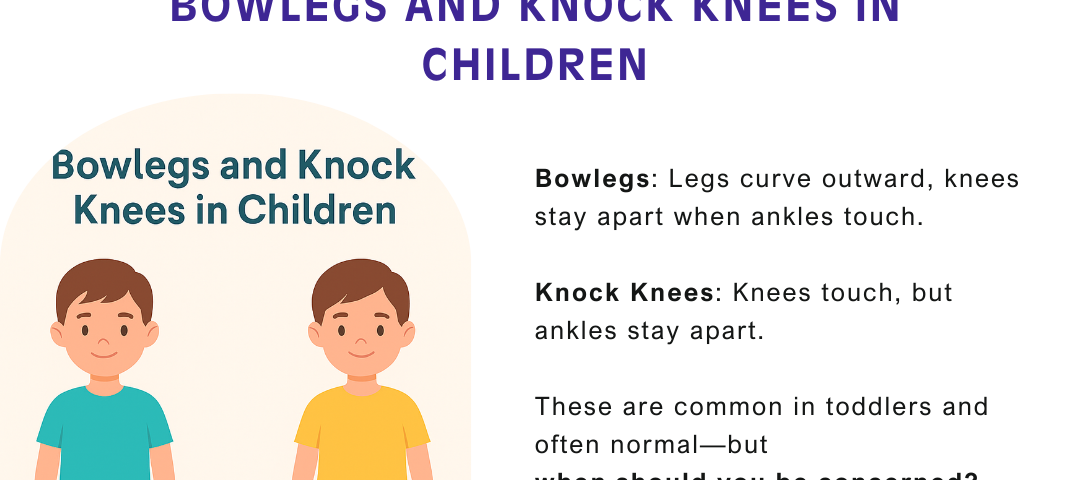What Are Bowlegs and Knock Knees?
Kids grow fast—and so do their legs! But sometimes, parents notice their child’s legs seem to curve a little too much. This might look like:
- Bowlegs (Genu Varum): Legs curve outward like a bow, knees stay apart when ankles touch.
- Knock Knees (Genu Valgum): Knees touch but the ankles stay apart, making the legs angle inward.
These are common in toddlers, and often part of normal development. But when should you worry? Let’s find out.
How to Recognize It at Home
Age-Based Signs
| Age | Common Pattern |
|---|---|
| 0–2 yrs | Bowlegs are normal |
| 2–4 yrs | Legs may appear straightening |
| 3–7 yrs | Knock knees can show up |
| 7+ yrs | Legs should straighten out |
Red flags to watch for:
- One leg curved more than the other
- Persistent bowing or knocking after age 7
- Pain in knees or hips
- Difficulty walking or running
- Frequent tripping or limping
What Causes It?
Normal Growth
- Most kids outgrow bowlegs and knock knees naturally as they grow.
Other Causes
- Rickets (Vitamin D deficiency)
- Bone infections or injuries
- Genetic bone disorders
- Obesity, which may worsen knee alignment
When to See a Pediatric Orthopedic Specialist?
Book an appointment if:
- The condition worsens with age
- It affects your child’s posture or walking
- There’s pain, swelling, or imbalance
- You notice unusual gait or leg length difference
Diagnosis & Evaluation
Your child’s doctor may suggest:
- Physical examination of legs and gait
- X-rays to check bone alignment
- Vitamin D and calcium tests, if rickets is suspected
Treatment Options
1. No Treatment (Observation)
In mild cases and early age, just watching growth and doing regular check-ups may be enough.
2. Vitamin Supplements
If rickets or deficiency is the cause, your doctor may prescribe Vitamin D, calcium, and sunlight exposure.
3. Bracing or Orthotics
In growing kids with moderate cases, leg braces or night splints may help correct the angle.
4. Physiotherapy
Custom exercises can improve muscle strength and balance, especially if gait is affected.
5. Surgical Correction
Rarely needed, but in severe or untreated cases after age 10, guided growth surgery or osteotomy may be recommended.
Parent Tips
- Encourage daily play and outdoor time ☀️
- Include calcium-rich foods like milk, paneer, and leafy greens
- Don’t panic—mild curves are usually part of normal growth
- Choose soft, well-fitting shoes for toddlers
- Avoid self-diagnosis—get an expert opinion for peace of mind
Dr. Rajesh’s Advice
At OrthoKid, we see many concerned parents about leg shape. Remember—early identification and right care can make all the difference. Let’s walk your child through growth confidently and pain-free!



